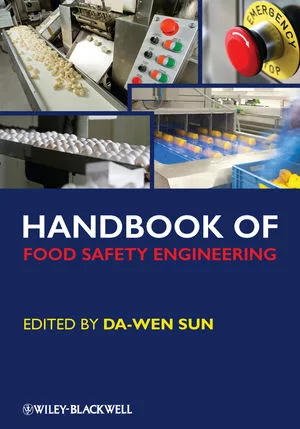Sponsored Content
Is Your Food Facility Audit Ready? Point-of-use compressed Air Filters Help Ensure Product Quality

Sergey201982/iStock / Getty Images Plus via Getty Images
Compressed air is a risk in food processing facilities that can cause microbial contamination of food products, leading to possible foodborne illnesses, costly recalls, and failed audits. To avoid these outcomes, it is in a manufacturer's best interest to adhere to Good Manufacturing Practices (GMPs) relating to compressed air quality standards recommended by Global Food Safety Initiatives (SQF, BRC, FSSC 22000).
Receiving certification from GFSI-recognized auditing bodies such as the Safe Quality Food (SQF) program can not only help a company better ensure food safety but, by being held to an industrywide standard, it can also instill greater confidence in a brand’s product among retail buyers and other supply chain partners. However, many companies are unable to pass audits and receive certification, stripping them of the ability to demonstrate their compliance with industry best practices to customers. The reasons for difficulty passing SQF and other GFSI-recognized audits may vary, with dense and complex codes providing ample opportunities for confusion about GMPs and revealing possible pitfalls in the production process.
Compressed air quality is a difficulty that prevents companies from achieving valuable certification. Luckily, a critical solution exists that companies can leverage to add an extra layer of insurance against contaminants within compressed air, helping a facility meet rigorous audit expectations. This solution is Parker 3-stage point-of-use filtration.
How Compressed Air Can Jeopardize Safety and Compliance
Compressed air can carry moisture, particulate matter, compressor oil, and bacteria. Inlet air to a compressor typically contains 5–50 bacteria per cfm, meaning that a 75-hp compressor with a capacity of 300 scfm takes in 100,000–1 million bacteria per hour. Moreover, downstream air reservoirs, piping, fittings, and controls in a compressed air system provide a warm, oxygen-rich environment that is ideal for bacterial harborage and microbial biofilm growth.
It is impossible for the human eye to judge the quality of compressed air due to the small size of contaminant particles. Common direct and indirect contact points for compressed air include bagging, sparging/mixing, drying, air knives, and pneumatic exhaust, all providing an opportunity for product contamination.
Due to the complexity of compressed air systems throughout a production facility, the filtration of air leaving the compressor room may not be enough on its own to meet sterile air requirements. A further step is necessary to ensure food safety and pass GFSI-certified audits.
The Importance of Point-of-Use Filtration in Being Audit-Ready
Drying air to a low dewpoint, ideally, -40F°/C, effectively inhibits microbial growth in a compressed air system but does not eliminate microbes. Some hazardous pathogens can form spores or enter dormancy when their conditions to thrive are disrupted, only to resume propagation when reintroduced to moisture. Additionally, contamination between the compressor room and an operator’s air gun can occur downstream, caused by water vapor, microorganisms, atmospheric dirt, oil vapor, oil aerosols, rust, or pipe scale. Although drying air should not be neglected, point-of-use filtration is essential to capturing microbial and physical contaminants before they can come in contact with food products. Monitoring compressed air for purity at point-of-food contact and packaging is also crucial.
Looking for quick answers on food safety topics?
Try Ask FSM, our new smart AI search tool.
Ask FSM →
Drying air, point-of-use filtration, and testing and monitoring are not only recommended GMPs that can help ensure food safety, but they are interventions codified by SQF. Regarding compressed air filtration in food processing facilities, Module 11.5.5.2 in Edition 8 of the SQF code, published in November 2017, specifies expectations:
- “Wherever the compressed air comes in contact with the food, either directly or indirectly, filters are to be in place at point-of-use where the air enters the final section of tubing (not in the compressor room).”
- “The recommended final stage of filtration in these food contact areas should have a rating of 0.01 micron with an efficiency of 99.999% (or as determined by appropriate risk analysis).”
- “It is generally advisable to locate the filtration as close as practically possible (near the point-of-use, or the point where air contacts the food), so as to not have long lengths of piping/tubing between the microbial removal filter and the air/food contact point.”
Ensuring Audit Readiness
To help companies adhere to GFSI standards, Parker recommends applying point-of-use sterile air filtration wherever compressed air comes in contact directly or indirectly with food or food contact surfaces. Parker’s Balston 3-Stage point-of-use filters remove contaminants at a very high efficiency rating—up to 99.99% for 0.01-micron particles and droplets.
Also recommended is ensuring that the final stage of point-of-use filtration has a rating of 0.01 micron with a particulate removal efficiency rating equal to or better than 99.999%, providing a 5-log reduction of any microbial contamination. Parker’s final stage of filtration achieves this by removing all viable organisms.
Parker recommends integrating point-of-use filtration into compressed air systems based on ISO 8573-1:2010 standards and following Sanitation Standard Operating Procedures (SSOPs) at each stage to maintain filters and monitor air purity. Filter application GMPs and maintenance SSOPs, as recommended by Parker, are as follows:
- Stage 1: Remove bulk liquid and particulate matter down to 0.01 micron at ≥ 93% coalescing efficiency with automatic drain in filter. Change filter element every 6 to 12 months.
- Stage 2A: Remove oil and water aerosols and smaller particulate matter down to 0.01 micron at ≥ 99.99% coalescing efficiency with automatic drain in filter. Change filter element every 6 to 12 months.
- Stage 2B (Optional): If there is a concern for hydrocarbon vapor carryover from the air compressor, then the installation of activated carbon filter may be necessary. Change filter element every 3 to 6 months.
- Stage 3: Remove microbial contamination down to 0.01 micron at ≥ 99.999% particulate removal efficiency (5-log reduction) with a sterile air filter. Change filter element every 3 to 6 months, or as soon as necessary based on point-of-use air quality tests for microbial content.
Finally, compressed air should be tested at each food contact point at least annually. Test intervals can be determined empirically based upon the presence of microbial contamination.
To learn how Parker’s compressed air filtration solutions can help make your food processing facility audit-ready, visit discover.parker.com/GMP-FS






.webp?t=1721343192)
